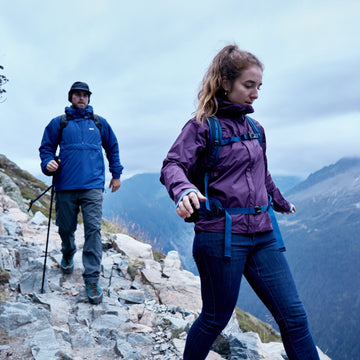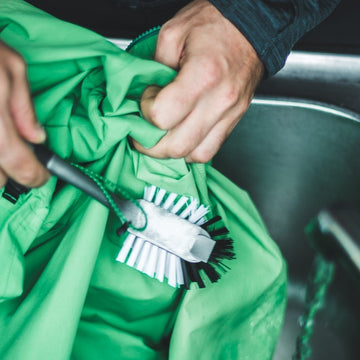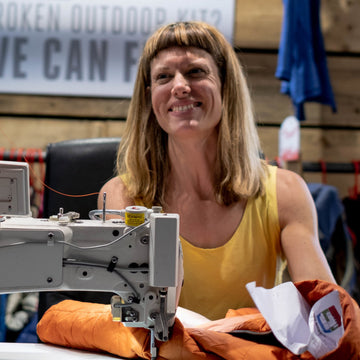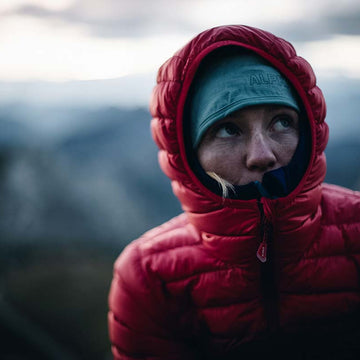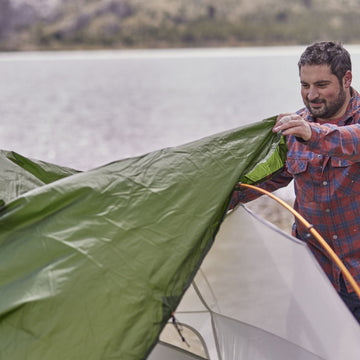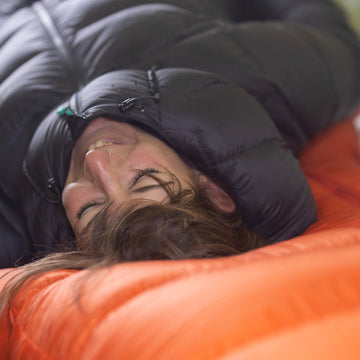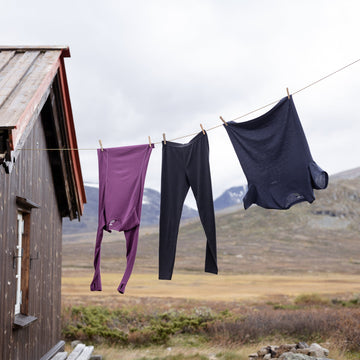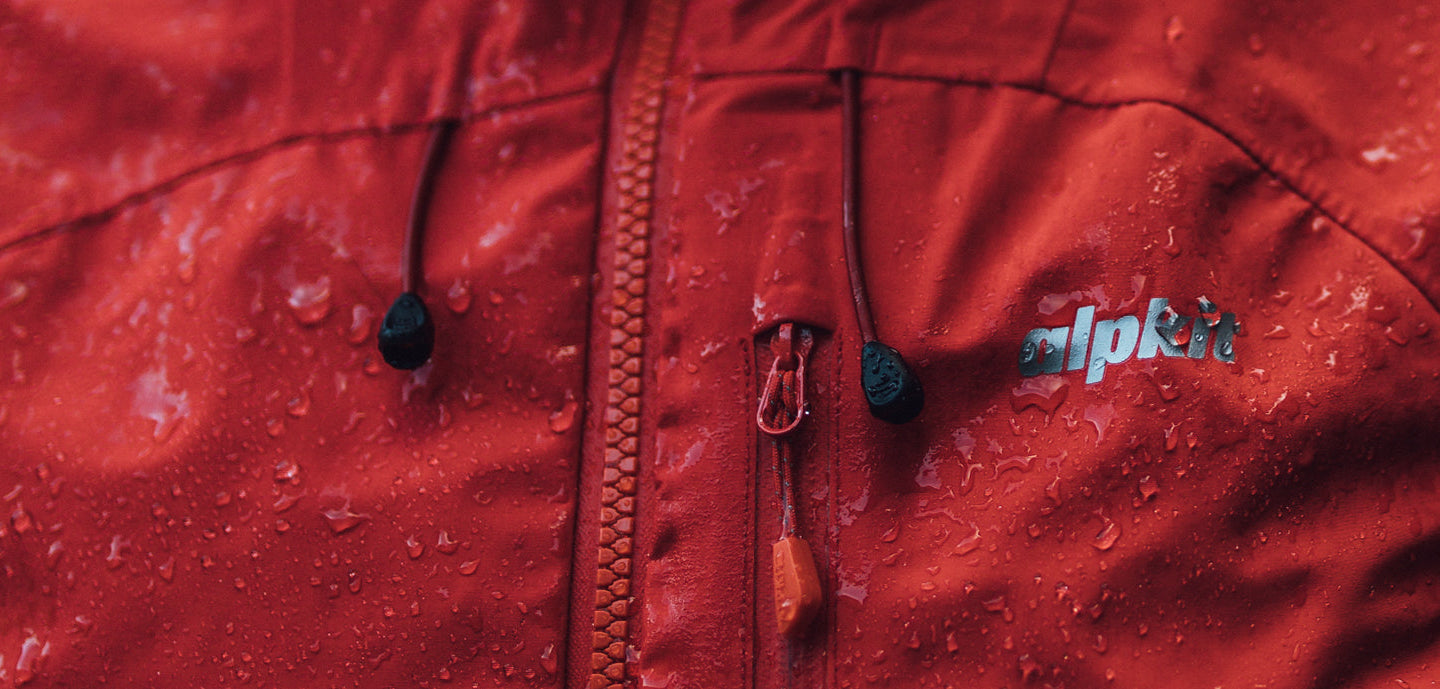
Find out how durable water repellents work and why you need to reproof your outdoor clothing to keep it working at its best.
Keeping your waterproofs clean and regularly reproofing them extends their useful lifespan and keeps them working at their best.
We've pulled Alpkit Design Manager Ronnie away from her big book of fabrics for a few minutes to explain how durable water repellents work and why you need to reproof your gear.
- Why do you need to keep waterproof fabrics clean?
- Do I have to reproof my jacket every time I wash it?
- What does a reproofer actually do?
- Why do you have to apply heat after treatment?
- Which are better, spray-on or wash-in reproofers?
- How often do I need to reproof my clothing?
- I haven't always needed to reproof my garments so often, what's changed?

Why Do You Need To Keep Waterproof Fabrics Clean?
Your Waterproof jackets And Trousers">waterproof clothing is treated with a durable water repellent (DWR). This coating stops water from sitting on your jacket, making it bead up and roll off instead. Dirt and contaminants (this could be mud, sweat, body oils, insect repellent, food or even detergent residue) reduce the ability of this DWR to repel water.
When your jacket stops beading, the outer fabric ‘wets out’ (becomes saturated with water). Your jacket then loses its breathability, perspiration builds up inside, your clothing feels heavier, and you soon get cold as the water in the fabric conducts heat away from your skin.
You can't just use regular detergents to clean your waterpoofs though, as these often contain additives that attract water, such as surfectants. These additives help to loosen dirt, but work against your clothing's DWR if they're not rinsed off properly.
The solution is to wash your kit with pure soap or a outdoor clothing">specialist wash and reproofing solution. It's important to never to use fabric softeners or conditioners on your technical clothing as these will destroy any wicking, repellency and breathability they once had!

Do I Have To Reproof My Jacket Every Time I Wash It?
If your garment stops beading up, it doesn’t necessarily mean the DWR has worn off. It may just have been temporarily masked by dirt and abrasion. In which case, it can be revived!
Often you can realign the DWR's molecules and restore performance by giving it a wash and then applying heat. After this, the fabric should bead up again. You can apply heat by using a cool iron or by tumble drying on a low heat. If your clothing is still not beading properly after you've washed and heat treated it, then it’s time to reproof.
What Does A Reproofer Actually Do?
At a microscopic level, the chain-like molecules of the DWR treatment bind to the surface of the fabric and act like a fringe of spikes (or fronds), making water bead up and roll off the surface. Abrasion and contamination of these spikes disrupts their orientation and stops them from working.
Reproofing tops up the factory applied DWR using an off-the-shelf reproofer product such as Alpkit Wash and Reproofer. The reproofer works partly by binding to the existing DWR molecules, so it’s best not to wait until the whole of your garment is wetting out straight away. For better results you should reproof your clothing when key areas (like the cuffs, sleeves and shoulders) stop beading.

Why Do You Have To Apply Heat After Treatment?
The factory applied DWR used on current Alpkit products uses PFC-Free C0 technology which is reactivated by heat. Some manufacturers state that their reproofer doesn't need heat curing to be effective, but it doesn't do any harm to the reproofer to heat treat it as well. Plus, it will help to revive any remaining DWR on your garment.
To heat treat your garment, you can use a tumble drier on a low setting or a cool iron. Tumble drying is the best option for insulated jackets">insulated or down jackets as it will help dry out the insulation at the same time. However, bear in mind that the mechanical action of a tumble dryer will cause wear and tear to the whole garment each time you do it.
For waterproof jackets">waterproof shells, a cool iron allows you to be more precise with your heat application and limits the mechanical wear and tear. If you are concerned about the fabric, you can always place a tea towel between the face of your garment and the iron.

Which are better, spray-on or wash-in reproofers?
That depends on what you're reproofing! Spray-on reproofers are best for waterproof jackets">waterproof shells as they allow you to target problem areas and treat only the outer surface of the fabric (which is what you want). For insulated jackets">insulated or down garments, wash-in reproofers are better as they will treat the whole garment. Whichever you use, the key is to reproof your clothing when it's clean and to use heat to reactivate any remaining DWR.
How often do I need to reproof?
This very much depends on how much you use your gear. The simplest advice is to wash your clothing when it's dirty (or at least 6 monthly) and reproof it when you notice that rain is no longer beading. You don’t need to reproof every time you wash but, if in doubt, act sooner rather than later. If you leave it too long and wait until the whole garment is wetting out before reproofing, you’ll have a hard time restoring the DWR performance.

I Haven't Always Needed To Reproof My Waterproofs So Often – What's Changed?
DWR treatments used to be made with C8 fluorocarbons (also known as PFCs). Evidence showed that these chemicals accumulated in the environment and in the human body. Not only that, they would break down further into the chemicals PFOA and PFOS, which were found to have some seriously harmful effects.
Several years ago, the outdoor industry moved away from C8 to using shorter chain C6 molecules. C6 molecules broke down a lot quicker which meant they didn't accumulate so much and didn't produce PFOA or PFOS. However, these less harmful PFCs can still build up in the environment and may have potentially harmful effects. It's why we've moved all Alpkit waterproofs over to completely PFC-free DWRs.
The downside of these newer C6 and PFC-free DWR treatments is that the garments' stain resistance and durability are significantly reduced compared to C8. Why does stain resistance matter? Because dirt and oils (including those from your own body) inhibit the action of DWR. Sadly, the more environmentally friendly the DWR formulations are, the lower the performance level. The reality is that DWR performance has been reduced in recent years but we think this is a price worth paying to protect the environment.

So, to sum up.
- The DWR is what keeps your jacket from getting saturated with water so it stays breathable.
- Abrasion and dirt can stop your DWR from working properly.
- Cleaning and heat treating your garment revives the DWR.
- Never use fabric softeners or conditioners on your technical garments
- If cleaning doesn't work, a reproofer will restore the DWR.
- A wash-in reproofer is best for insulated jackets and a spray-on reproofer is best for waterproof jackets.
- Heat treating your garment after washing or reproofing helps the DWR perform better (with a tumble drier on low for insulated jackets and an iron for waterproofs).
- The more environmentally friendly the DWR is, the less durable and stain resistant, it will be.

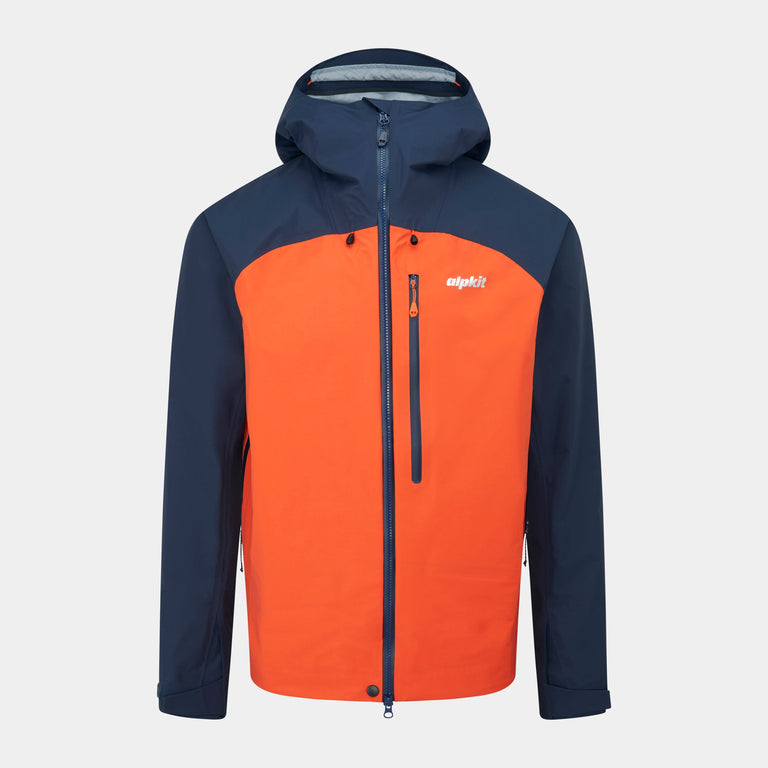
![Definition [Mens]](http://alpkit.com/cdn/shop/files/Definition-men-2.jpg?v=1760030579&width=768)

![Definition [Womens]](http://alpkit.com/cdn/shop/files/Definition-women-3.jpg?v=1764162500&width=768)
![Balance [Mens]](http://alpkit.com/cdn/shop/files/balance-mens-2025-reef.jpg?v=1764160608&width=768)
![Balance [Mens]](http://alpkit.com/cdn/shop/files/Balance-mens-2.jpg?v=1765290834&width=768)
![Balance [Womens]](http://alpkit.com/cdn/shop/files/balance-womens-2025-black.jpg?v=1764160433&width=768)
![Balance [Womens]](http://alpkit.com/cdn/shop/files/Balance-womens-3.jpg?v=1765272052&width=768)
![Fortitude [Mens]](http://alpkit.com/cdn/shop/files/fortitude-mens-2025-alder.jpg?v=1763659494&width=768)

![Fortitude [Womens]](http://alpkit.com/cdn/shop/files/fortitude-womens-2025-alder.jpg?v=1763659499&width=768)

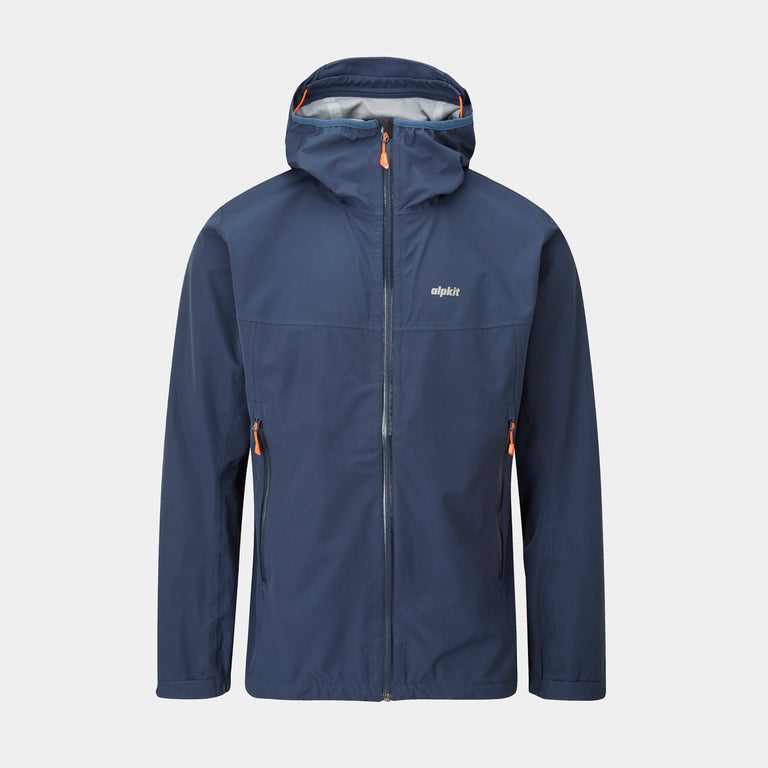

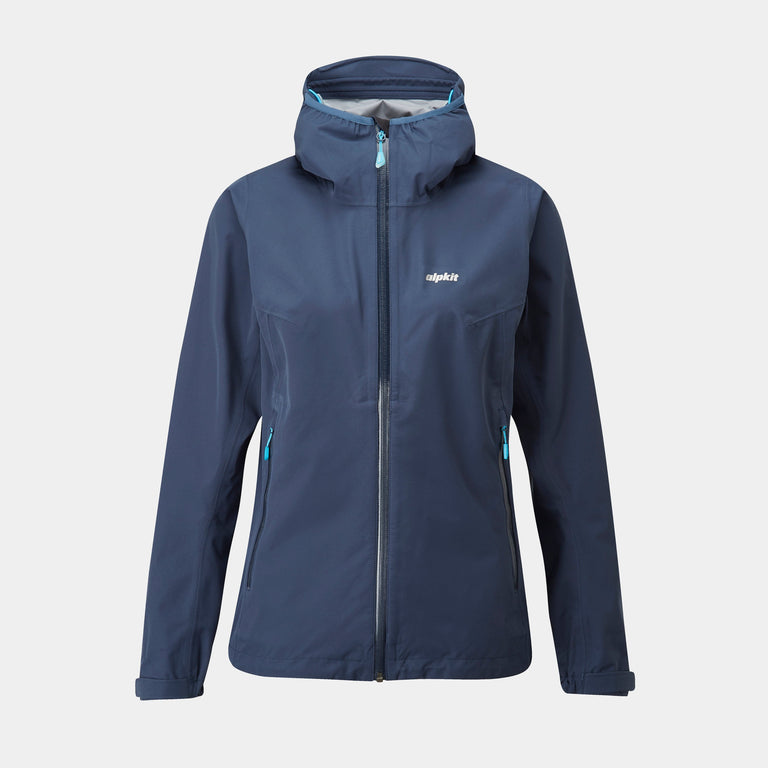



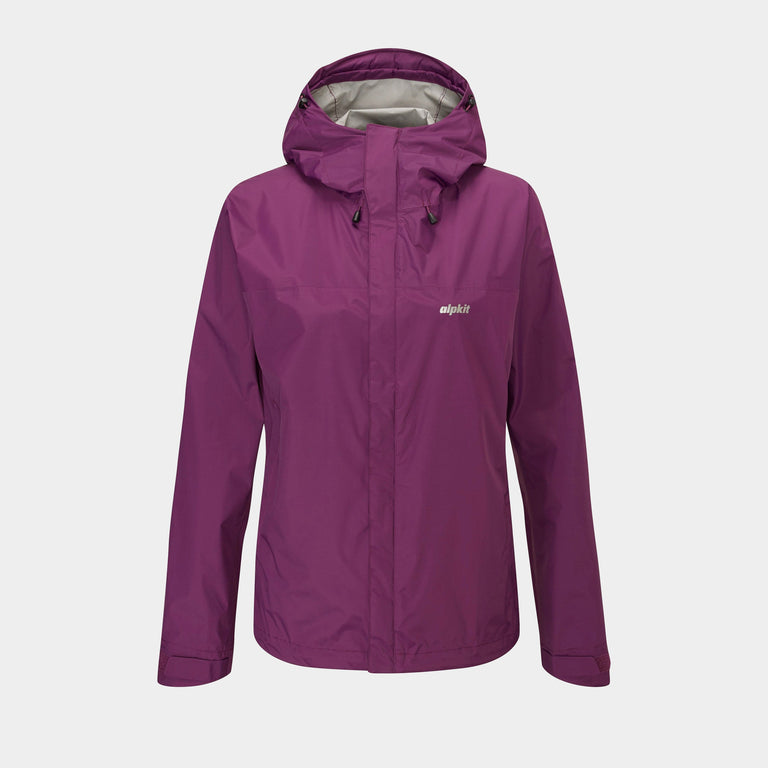

![Gravitas [Mens]](http://alpkit.com/cdn/shop/files/mens-gravitas-2025-chilli.jpg?v=1764948171&width=768)
![Gravitas [Mens]](http://alpkit.com/cdn/shop/files/gravitas-location-1-RETOUCH.jpg?v=1765452161&width=768)
![Gravitas [Womens]](http://alpkit.com/cdn/shop/files/womens-gravitas-reef.jpg?v=1722461253&width=768)

